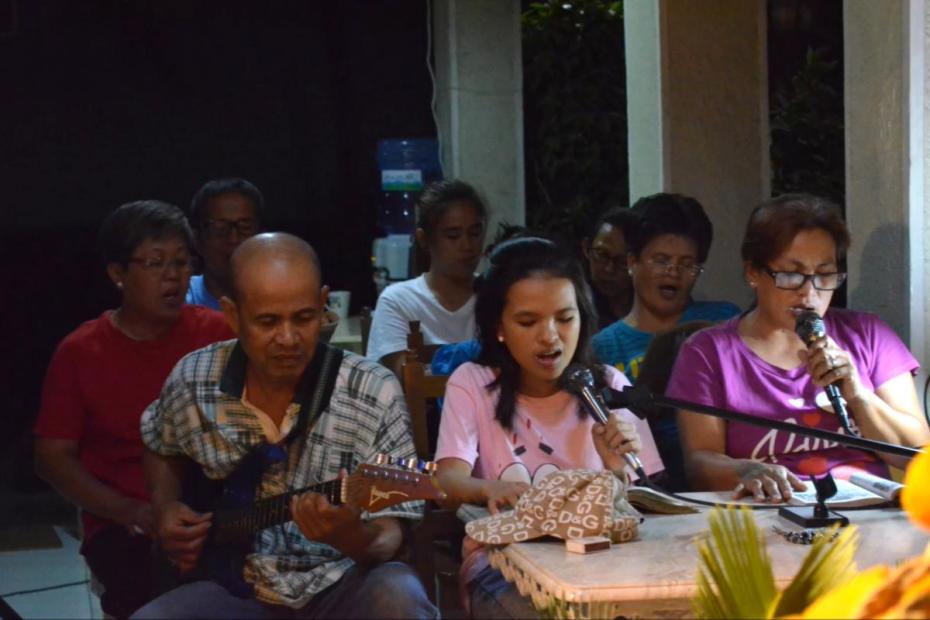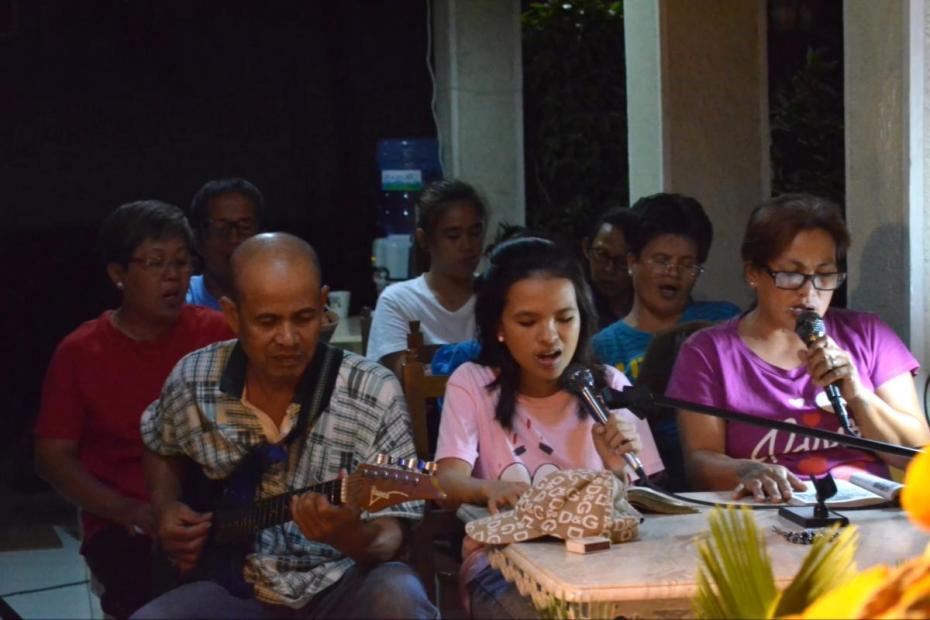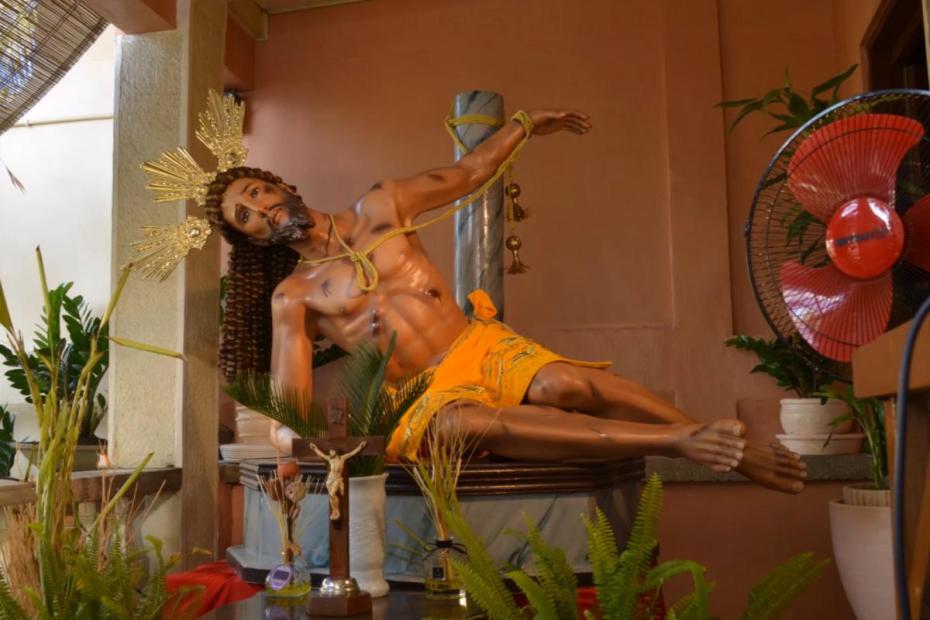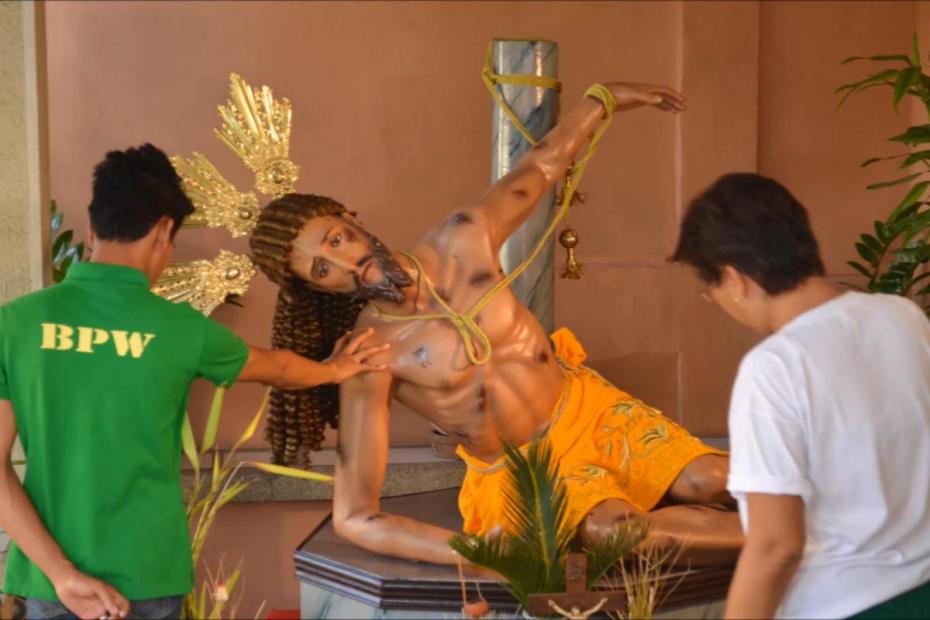The recitation or chanting of the Passion story of Jesus — the Pabása ng Pasyón — is one of the oldest Holy Week traditions in the Philippines. Since the 17th century, believers have gathered that week to pray by singing or reading a story of the Passion of Jesus set to verse. The Pabása ritual builds on a tradition of epic singing that predates Christianity’s rise in the Philippines.
In parishes, chapels, private residences and even in offices, barangay halls and prisons, people gather for the Pabása ng Pasyón.1 Inmates organize and participate in Pabása as reparation for their sins, as a sacrificial act of thanksgiving for favors granted, and as an offering for favors requested. Families and devotees typically have similar reasons, or continue the tradition as a form of thanksgiving for the gift of life to a family member who has recovered from illness or who has overcome some other serious difficulty. It is an expression of faith in Jesus, a reminder of a central part of the story that gives rise to Christian faith, and a source of solidarity for family members or groups.
Today Pabása is prayed over a 24-hour period in the first few days of Holy Week, in front of an altar decorated with flowers, candles, lights and an image of Jesus Christ.
Groups of Pasyón singers in Bustos, Bulacan take turns chanting the Passion over a 24-hour period during the first days of Holy Week.
On Monday of Holy Week in Barangay Poblacion Bustos, in Bulacan province, several groups of Pasyón singers filled the air with chants of high pitched prayer in a range of melodies, from morning through the night. The Pabása started at 10 a.m. with the recitation of the Holy Rosary, followed by the Litany of the Saints and then the singing of the Pasyón in front of the altar of a flagellated image of Jesus Christ. The first group of the Pasyón singers came from the same barangay in Poblacion. A family who annually hosts the Pabása provided enough food and refreshments for the Pasyón singers and attendees to last until the Pabása ended the next day. At around 2 p.m. a group from Barangay Talampas arrived for their turn to sing the Pasyón while the first group was having lunch. At about 6 p.m. a group of singers from Barangay Poblacion began singing the Pasyón until midnight. The first group of singers stayed until morning to finish the Pasyón at about 7 a.m. Their leader, a middle aged woman, said that she learned singing the Pasyón from her grandmother, and she intends to pray it for the rest of her life.
In some urban areas in the Philippines, Pabása ng Pasyón is a declining tradition, but there are always people who make a panata (vow) to participate. The cost to feed participants can be one reason. Overseas Filipinos sometimes return home to participate as their panata, and can subsidize the meal. In other instances it is held at a chapel, and religious organizations fund the cost. Its practice remains strong in the provinces of Bulacan, Rizal and Pampanga.
- 1A barangay is the smallest unit of government in the Philippines, roughly representing neighborhoods, each of which normally has its own officers, police, and barangay hall.



